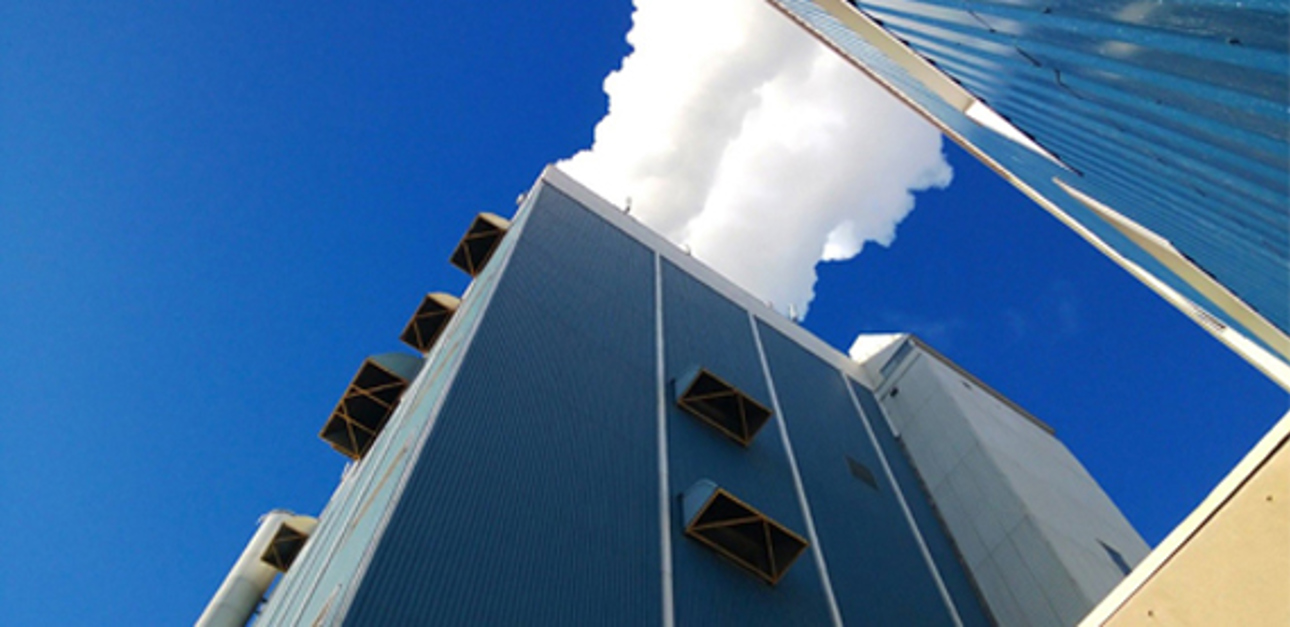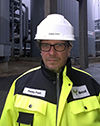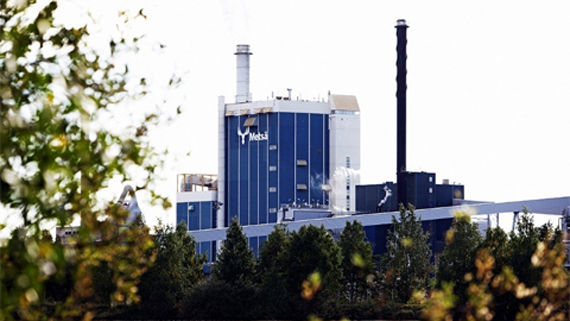Metsä Fibre Kemi mill uses long-term process development agreement to stay on top of the game
Dec 18, 2014

Photo by Pekka Posti
Pekka Posti, Operation Manager of Power Plant and Recovery Line in Metsä Fibre Kemi mill says: "The long-term service agreement with Valmet and Metso Automation ensures that we have in our use experts who know well our process but also have the best and latest information of the current technology development in their use. That way we secure the continuity of the development work and stay on top of the business."
Quote from Metsä Group’s press release from March 2014: “In 2009, Metsä Group specified a goal of improving its energy efficiency by 10% by 2020. Last year, Metsä Fibre, part of Metsä Group, took a big step towards that goal: the company successfully improved the efficiency of renewable energy production to a value of several million euros by just questioning its operating methods without major investments. Bioenergy is a joint matter of the entire Metsä Fibre now. Particularly excellent results were achieved at the Kemi mill, which is a prime example of well-functioning development work at its best. The share of the Kemi mill in meeting the 2013 bioenergy goals is more than 50%.”
Metsä Fibre Kemi pulp mill produces 590,000 t/a Elemental Chlorine Free (ECF) softwood and hardwood pulp and is specialized in producing pulps best suited for linerboard, tissue and special paper manufacturing. Self-sufficiency of the energy production is 146%. The mill produced 3,257 GWh heat and 576 GWh electricity in 2013.
Long experience of doing performance development with Valmet
Kemi pulp mill was the first Metsä Fibre mill to take long-term development agreement into use in its recovery boiler and evaporation plant. The cooperation started with Metso Automation over ten years ago. Valmet was included in the agreement at the beginning of 2008. The agreement in Kemi pulp mill is tripartite between Metsä Fibre, Metso Automation and Valmet connecting the know-how of both Metso Automation and Valmet for the use of Metsä Fibre. Now most of the Metsä Fibre pulp mills have similar kind of development agreements.
"We have been a pacemaker of the development in many stages of modern pulp production. The recovery boiler was originally built in 1990 and the evaporation plant in 2003. Both have stayed modern with continuous development and some larger investments. We were the first to have Super Concentrator in the evaporation plant, and also the first in the world to have combustion of biosludge and concentrated non-condensable gases in the recovery boiler. With the co-operation agreement we plan to stay in the frontline of the development.
The main thing is to continuously question the status quo and consider what we could do better and we expect Valmet to bring us constantly suggestions and ideas of how to develop our process", Pekka Posti explains. "It requires time to get this kind of co-operation to work well. It does not happen by pushing the button. For us there was about a 2-year learning curve before both parties of the agreement found the right rhythm to work. Now the agreement is an active development tool for us. It helps us to bring new practices into use and to develop our process. It is important that we have experts of equipment in the mill site to bring their know-how into our use since our own staff does not have time nor skills to do this kind of work."
 |
Operation Manager of Power Plant and Recovery Line, Pekka Posti sees that the long-term development co-operation with Valmet and Metso Automation guarantees the continuity of the process development. |
Continuity is the key of the co-operation
Pekka Posti shares the operational model of the performance agreement: "In the current operational model basic payment guarantees the agreed level of expert presence at the mill and that gives all parties security. To us the security that there will be experts at our mill, and to Valmet that they can keep those persons at their payroll. It is important that those persons are the same for several years, because of the learning curve. Additional to the basic payment we have indicators to measure successfulness of the agreed objectives. Bonus triggers are connected to those indicators giving maximum benefit for all the parties of the agreement. Availability and energy efficiency are the priorities number one and two, and they are naturally also the main bonus triggers. We expect Valmet to give us proposal for improvements every spring to get the plans made early enough to get them to our investment budget for the next year. With professionals of Valmet we go through our needs of development and that’s the heart of our Long-Term Service Agreement. Doing things together, finding solutions together."
Pekka Posti shares an example of a successful improvement done recently:
"A very successful process improvement project was the renewal and optimization of the sootblowing process in the recovery boiler. We split the steam line of sootblowing into two separate systems. Now we can use bled steam from turbine to sootblowing boiler bank and economizers and use high pressure steam only in the most demanding area, the superheaters. At the same time we also included automatic valves to adjust the sootblowing pressure. This improved both our energy efficiency and availability. We can now produce more electricity and increase availability by extra sootblowing sequences with the two steam lines in use. The payback time of this solution was very short. Some other examples we have done within the development agreement with successful results are new air preheaters, new optimization controls of evaporation plant giving possibility to increase dry content of the black liquor, and temperature control of boiler feedwater. All these actions improved our energy efficiency. We have also been successful in achieving targets for example better availability of recovery boiler and reduction of emissions."

Photo by Metsä Fibre